
How to Use FlySky Reciver FS-iA6B: Examples, Pinouts, and Specs
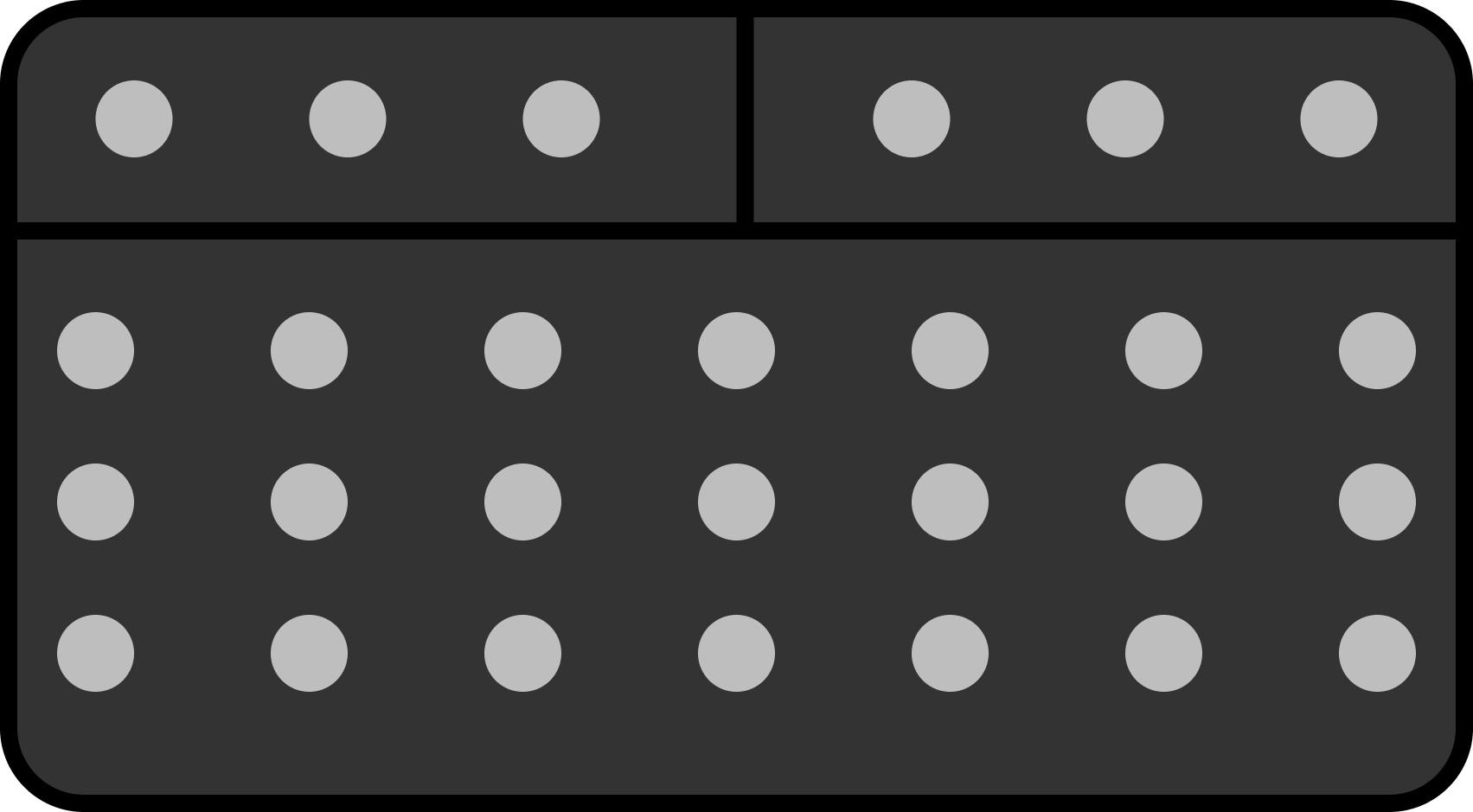
 Design with FlySky Reciver FS-iA6B in Cirkit Designer
Design with FlySky Reciver FS-iA6B in Cirkit DesignerIntroduction
The FlySky FS-iA6B is a 6-channel receiver designed for use in remote control (RC) systems. It provides reliable and stable communication between a FlySky transmitter and the controlled model, such as RC planes, cars, or drones. With its lightweight and compact design, the FS-iA6B is ideal for hobbyists and professionals seeking a dependable receiver for their RC projects. It supports i-BUS and PWM outputs, making it versatile for various applications.
Explore Projects Built with FlySky Reciver FS-iA6B
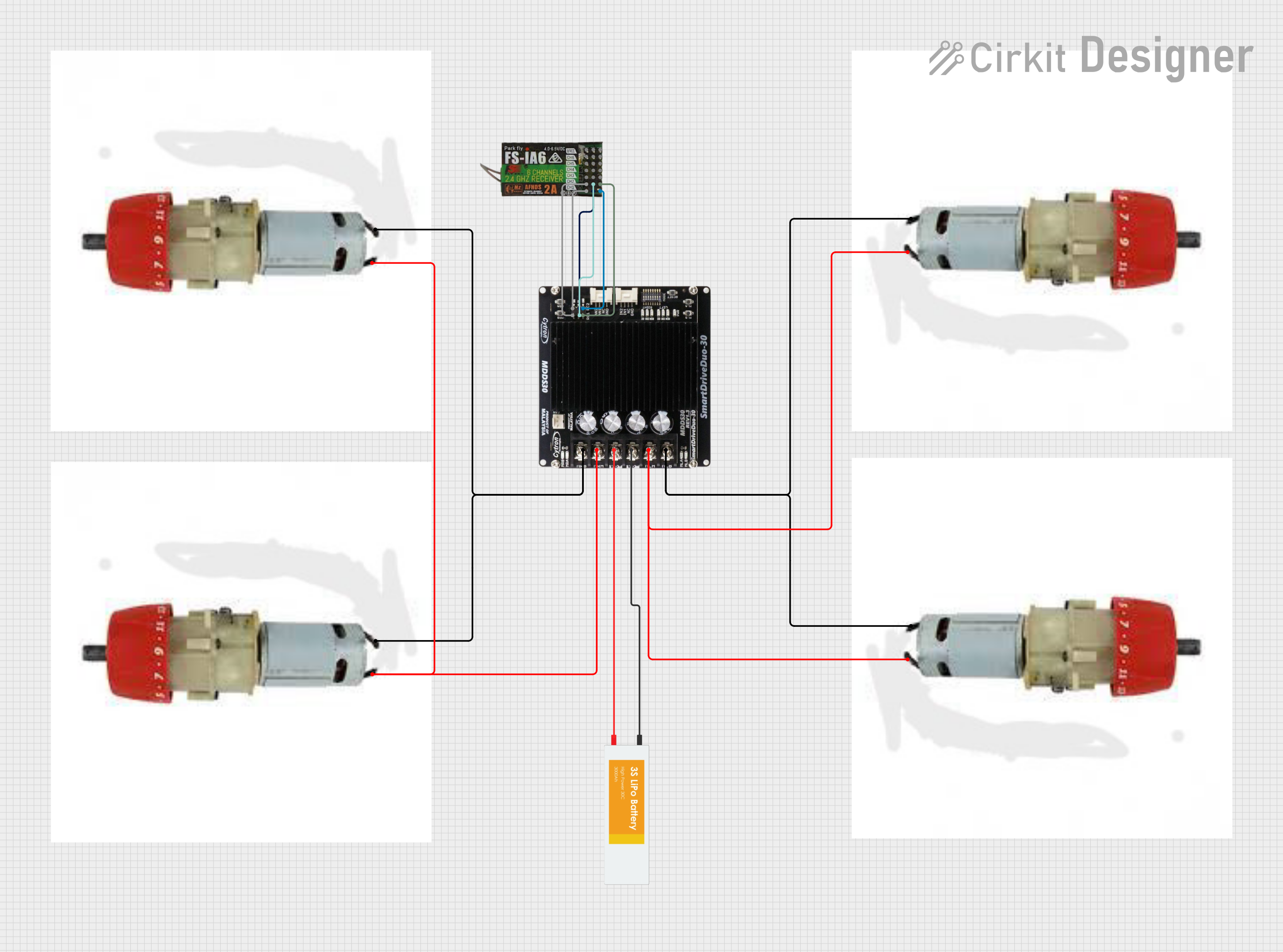
 Open Project in Cirkit Designer
Open Project in Cirkit Designer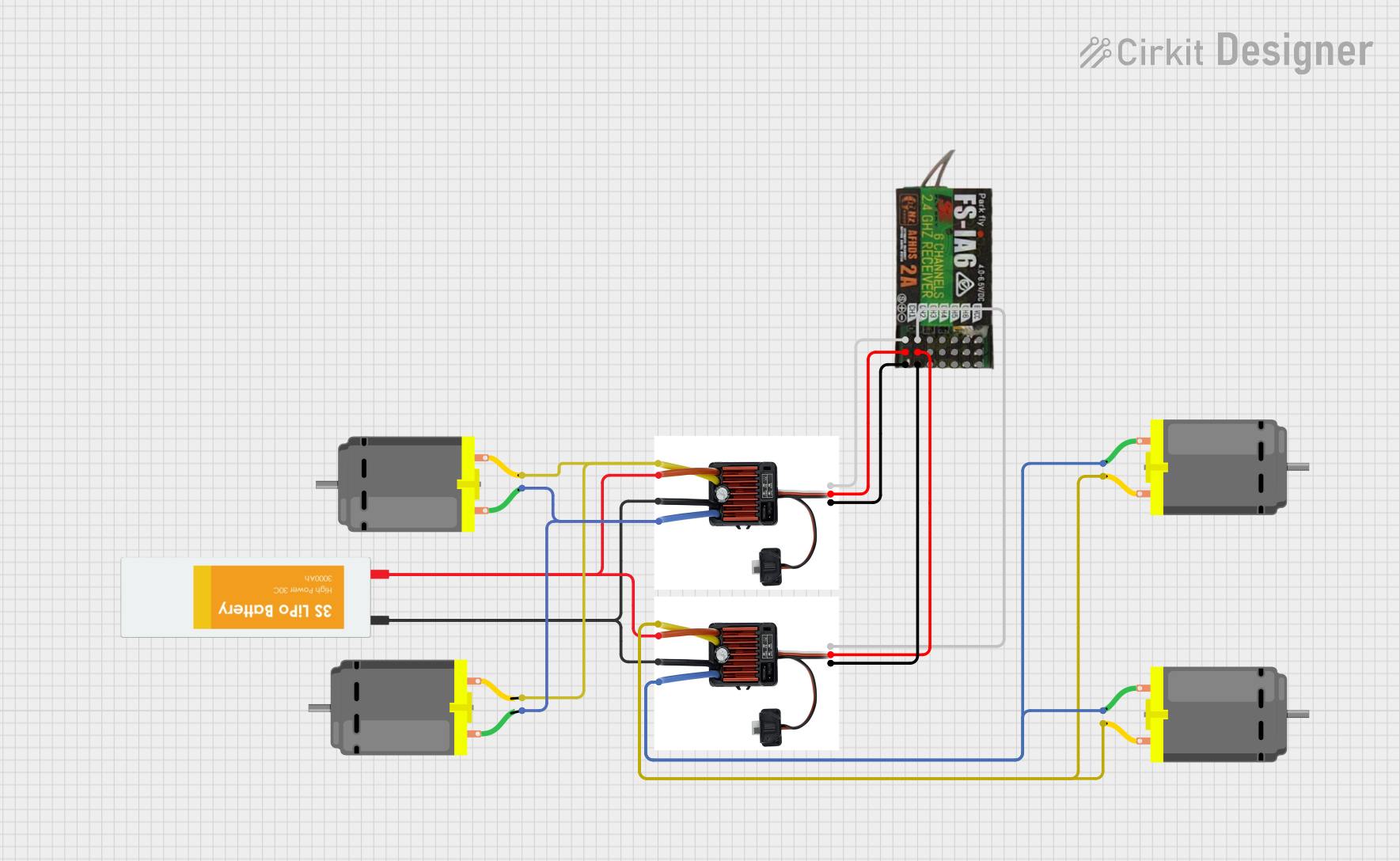
 Open Project in Cirkit Designer
Open Project in Cirkit Designer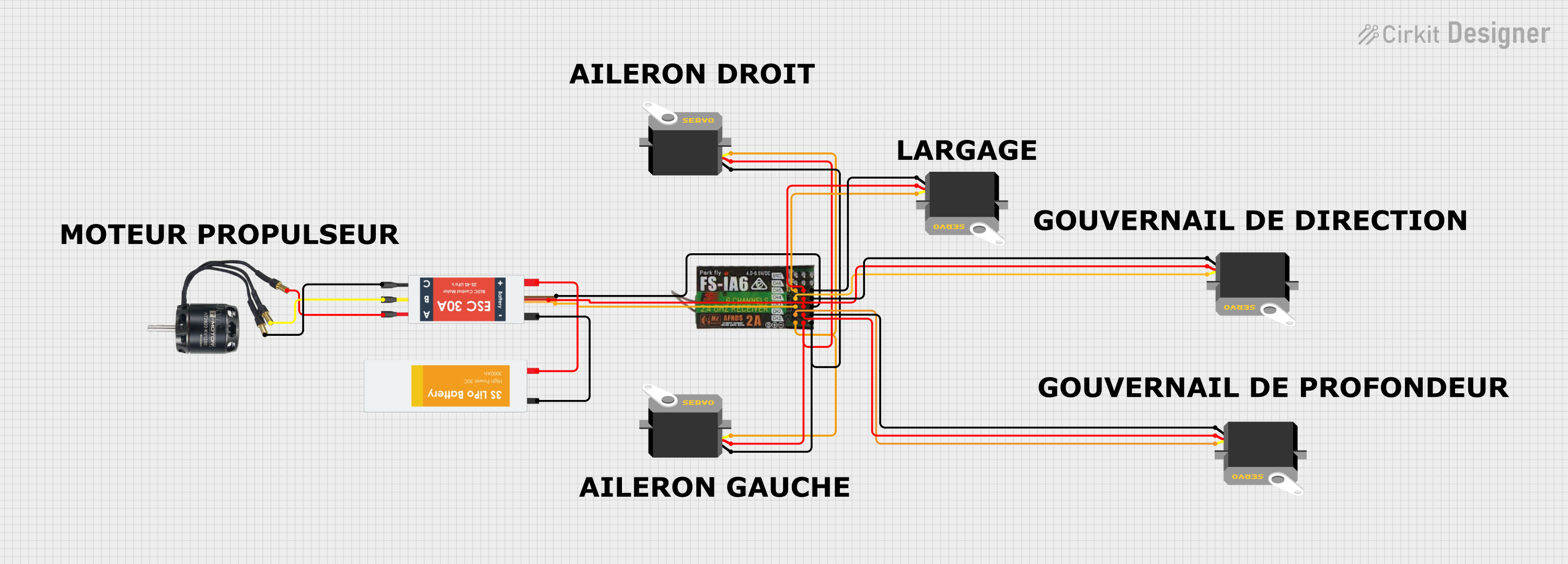
 Open Project in Cirkit Designer
Open Project in Cirkit Designer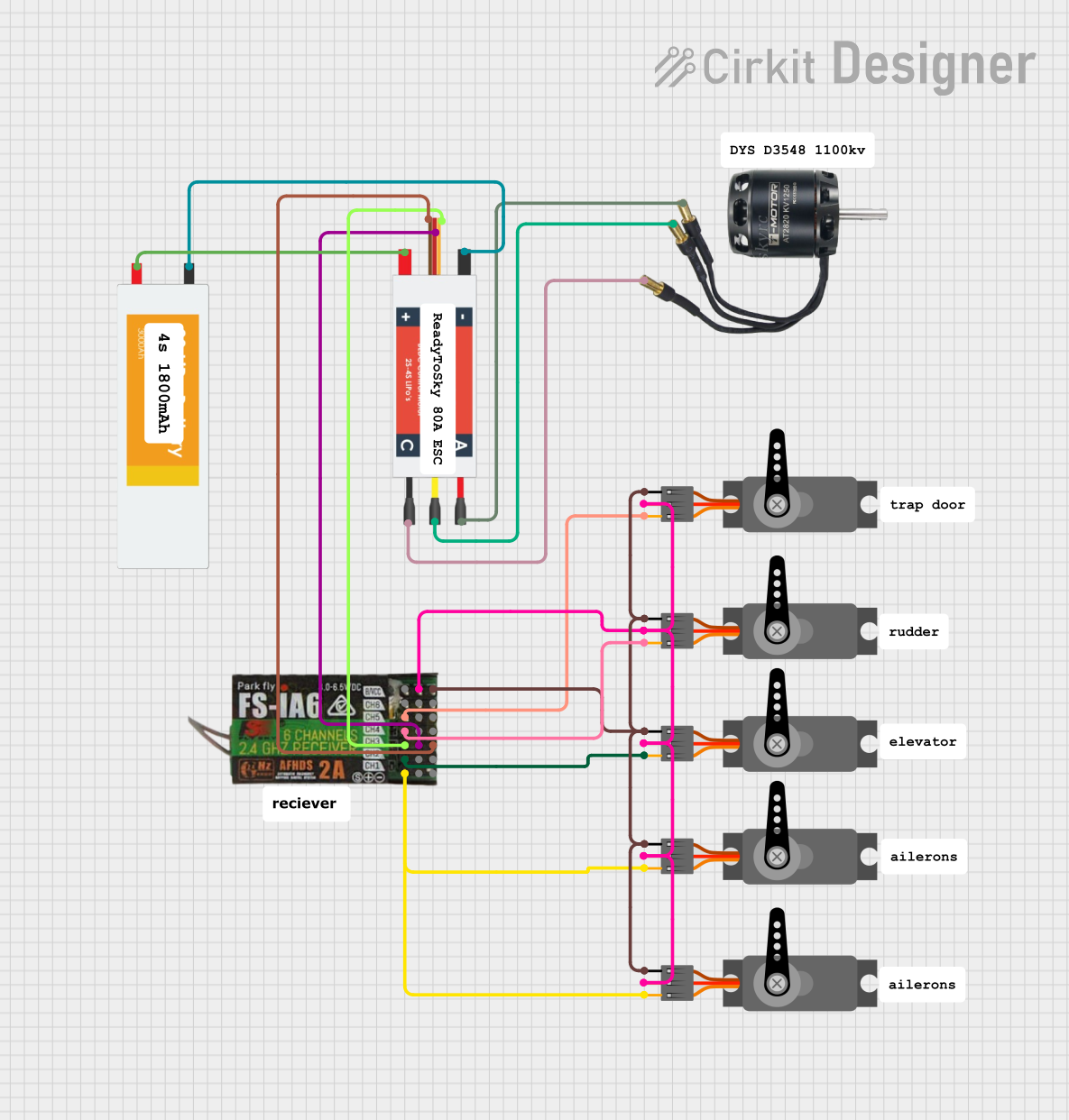
 Open Project in Cirkit Designer
Open Project in Cirkit DesignerExplore Projects Built with FlySky Reciver FS-iA6B

 Open Project in Cirkit Designer
Open Project in Cirkit Designer
 Open Project in Cirkit Designer
Open Project in Cirkit Designer
 Open Project in Cirkit Designer
Open Project in Cirkit Designer
 Open Project in Cirkit Designer
Open Project in Cirkit DesignerCommon Applications and Use Cases
- RC airplanes, helicopters, and drones
- RC cars and boats
- Robotics and automation projects
- Educational and hobbyist RC systems
- Projects requiring wireless communication between a transmitter and a model
Technical Specifications
The FS-iA6B receiver is designed to deliver high performance and reliability. Below are its key technical specifications:
| Specification | Details |
|---|---|
| Manufacturer | FlySky |
| Model Number | FS-iA6B |
| Channels | 6 |
| Frequency Range | 2.405 - 2.475 GHz |
| Modulation Type | GFSK |
| Input Voltage Range | 4.0V - 6.5V |
| Antenna Type | Dual antenna for enhanced signal |
| Dimensions | 47mm x 26.2mm x 15mm |
| Weight | 14.9g |
| Compatibility | FlySky transmitters (AFHDS 2A) |
| Output Modes | PWM, i-BUS |
| Range | Up to 500m (line of sight) |
Pin Configuration and Descriptions
The FS-iA6B receiver features multiple pins for connecting servos, ESCs, and other components. Below is the pin configuration:
| Pin Number | Label | Description |
|---|---|---|
| 1 | CH1 | PWM output for Channel 1 |
| 2 | CH2 | PWM output for Channel 2 |
| 3 | CH3 | PWM output for Channel 3 |
| 4 | CH4 | PWM output for Channel 4 |
| 5 | CH5 | PWM output for Channel 5 |
| 6 | CH6 | PWM output for Channel 6 |
| 7 | B/VCC | Power input (4.0V - 6.5V) |
| 8 | i-BUS | i-BUS output for digital communication |
| 9 | BIND | Binding pin for pairing the receiver with a transmitter |
Usage Instructions
How to Use the FS-iA6B in a Circuit
- Power the Receiver: Connect a power source (4.0V - 6.5V) to the B/VCC pin. This can be done using a battery or a BEC (Battery Eliminator Circuit) from an ESC.
- Connect Servos/ESCs: Attach servos or ESCs to the PWM output pins (CH1 to CH6) as required by your application.
- Bind the Receiver:
- Insert the binding plug into the BIND pin.
- Power on the receiver. The LED will start flashing, indicating it is in binding mode.
- Put your FlySky transmitter into binding mode. Once the binding is successful, the LED on the receiver will stop flashing and remain solid.
- Remove the binding plug and restart the receiver.
- Test the Setup: Ensure all channels respond correctly to the transmitter inputs.
Important Considerations and Best Practices
- Antenna Placement: Position the dual antennas at 90-degree angles to each other for optimal signal reception.
- Voltage Range: Ensure the input voltage does not exceed 6.5V to avoid damaging the receiver.
- Signal Interference: Avoid placing the receiver near high-power electronics or metal components that may cause interference.
- Failsafe Configuration: Configure the failsafe settings on your transmitter to ensure safe operation in case of signal loss.
Example: Using FS-iA6B with Arduino UNO
The FS-iA6B can be connected to an Arduino UNO to read PWM signals from the receiver. Below is an example code to read the PWM signal from Channel 1:
// Example code to read PWM signal from FS-iA6B Channel 1 using Arduino UNO
const int channel1Pin = 2; // Connect CH1 pin of FS-iA6B to Arduino pin 2
volatile unsigned long pulseStart = 0;
volatile unsigned long pulseWidth = 0;
void setup() {
pinMode(channel1Pin, INPUT); // Set CH1 pin as input
Serial.begin(9600); // Initialize serial communication
attachInterrupt(digitalPinToInterrupt(channel1Pin), readPulse, CHANGE);
}
void loop() {
// Print the pulse width (PWM signal) to the Serial Monitor
Serial.print("Channel 1 Pulse Width: ");
Serial.print(pulseWidth);
Serial.println(" microseconds");
delay(100); // Delay for readability
}
void readPulse() {
if (digitalRead(channel1Pin) == HIGH) {
// Record the time when the pulse starts
pulseStart = micros();
} else {
// Calculate the pulse width when the pulse ends
pulseWidth = micros() - pulseStart;
}
}
Notes:
- Connect the GND pin of the FS-iA6B to the GND of the Arduino UNO.
- Ensure the receiver is powered within its specified voltage range.
Troubleshooting and FAQs
Common Issues and Solutions
Receiver Not Binding to Transmitter:
- Ensure the transmitter is compatible with the FS-iA6B (AFHDS 2A protocol).
- Verify the binding plug is correctly inserted into the BIND pin.
- Check that the receiver and transmitter are powered on during the binding process.
No Signal Output from Channels:
- Confirm the receiver is properly bound to the transmitter (solid LED indicator).
- Check the connections between the receiver and servos/ESCs.
- Ensure the transmitter is configured correctly, and the channels are not disabled.
Intermittent Signal Loss:
- Reposition the antennas to reduce interference.
- Ensure the receiver is not placed near high-power electronics or metal objects.
Receiver Overheating:
- Verify the input voltage is within the specified range (4.0V - 6.5V).
- Avoid prolonged operation in high-temperature environments.
FAQs
Q: Can the FS-iA6B be used with non-FlySky transmitters?
A: No, the FS-iA6B is designed to work exclusively with FlySky transmitters using the AFHDS 2A protocol.
Q: What is the range of the FS-iA6B receiver?
A: The receiver has a range of up to 500 meters in line-of-sight conditions.
Q: How do I connect multiple servos to the receiver?
A: Connect each servo to a separate PWM channel (CH1 to CH6) on the receiver. Ensure the power supply can handle the total current draw of all connected servos.
Q: Can I use the FS-iA6B for telemetry?
A: Yes, the FS-iA6B supports i-BUS, which can be used for telemetry data when paired with compatible FlySky transmitters and sensors.